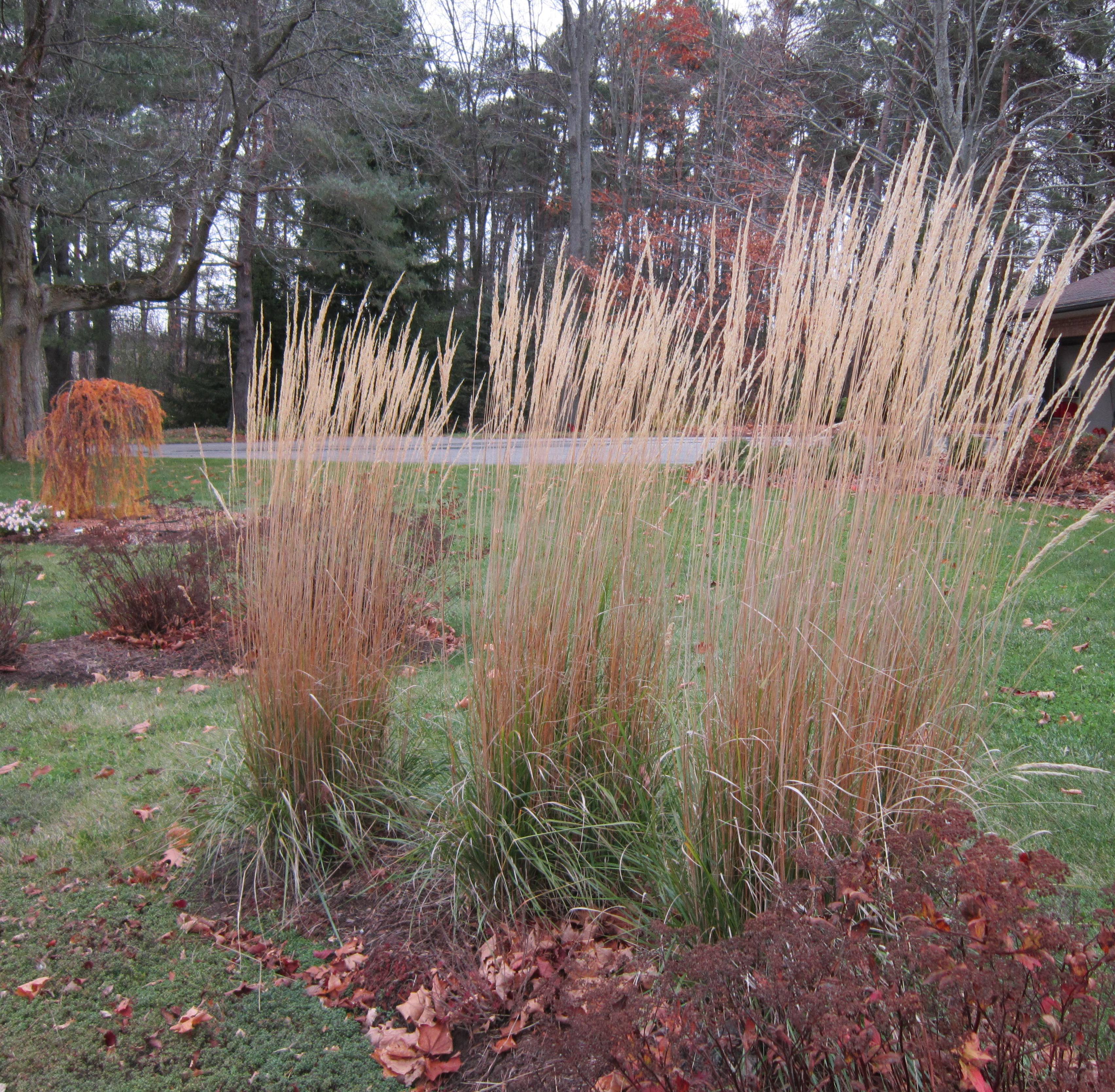‘Karl Foerster’ Feather Reed Grass Stands up well during the winter providing interest in the winter landscape.
As the growing season ends it is time to think about preparing your garden for winter. What should be done with all those perennials? Some gardeners simply cut back everything while others cut nothing and wait for spring to do a clean up. A more balanced approach can keep your perennials healthy, provide winter interest in the garden and feed the birds.
Starting in early October take a walk around your garden with pruners in hand and cut back to ground level any perennials that are flopping over or have dead foliage or mildew. After the first hard frost it is time for a more thorough cut back. Some perennials should definitely be cut back, some should not and others are personal preference.
Peonies should be cut back and their foliage discarded, not composted as leaves can carry fungal diseases. Iris foliage should be removed too as dead iris foliage becomes cover for iris borer eggs and fungal diseases. The decaying leaves of hostas provide cover for the eggs of slugs so if you have had significant slug damage you may want to cut back your hostas.
Daylilies respond well to shearing and their dead foliage is not attractive so they could be cut. The foliage of any plant that is mildewed or susceptible to mildew such as phlox should be removed.
Chrysanthemums and Heuchera (coral bells) like the protection their foliage provides for their crowns so should be cleaned up in Spring not Fall.
Personal preference determines if other perennials should be cut back or not.
If a plant is still standing up straight and looking good after a hard frost you should consider keeping it. As well as providing winter interest they help to trap snow creating a blanket for tender perennials.
There are a number of perennials frequently left in Northumberland gardens. Sedums, especially Autumn Joy sedum a tough plant that holds snow like frosting. Echinachea (coneflowers) and Rudbeckia have attractive seed heads and provide food for birds. Astilbes have pleasing lacy looking seed heads. Most of the tall grasses such as Miscanthus and ‘Karl Foerster’ Feather Reed grass stand up well to winter weather and provide movement in the garden. And of course hydrangeas should be kept.
Each garden is different so deciding what to cut back and what to keep depends on the gardener. It is always fun to experiment to see what looks good in the fourth season garden.
(authored by Joy Cullen)

